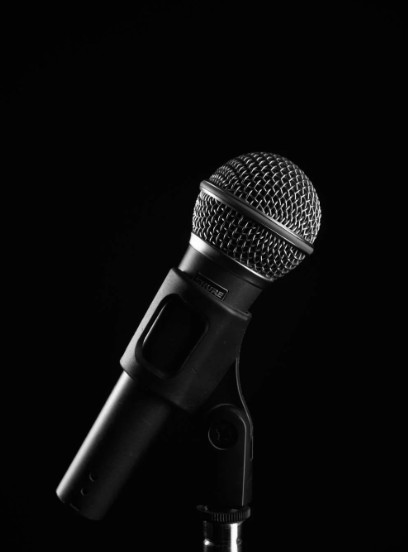Language and Music Among Second-Gen Arabs

By: Layla Mahmoud / Arab America Contributing Writer
For many second-generation Arabs, growing up in the diaspora often means experiencing a slow drift away from the Arabic language. Whether due to assimilation, shame, or lack of access, Arabic can become something distant. It is often understood passively, spoken hesitantly, or even lost entirely. Yet in recent years, a growing number of young Arab artists have been using music like rap, R&B, indie pop, and trap, as a way to reconnect with their roots. Through bilingual lyrics, sampled dialects, and intentional code-switching, these artists are transforming Arabic from something forgotten into something powerful. Arab America contributing writer Layla Mahmoud explores how modern music is becoming a means for second-generation Arabs to reclaim their language, not only as a form of communication, but also as a symbol of pride and resistance.
Language as Identity: From Forgotten to Found
For many second-generation Arabs, Arabic was something heard more than spoken. It was woven into lullabies, reprimands, or phone calls with grandparents. But it wasn’t always nurtured. In Western schools and public spaces, English dominated. Arabic became the language of the household, not of self-expression. But now, a quiet shift is happening. Arab youth are reclaiming Arabic through music, in the slangy, messy, emotional way it lives in the streets and hearts of the Arab world. Music is no longer just art, it’s a linguistic lifeline.
Rap and the Rise of Vernacular Arabic
One of the most powerful tools for language reclamation is rap. Artists like Felukah, The Synaptik, and Marwan Moussa use Egyptian, Levantine, and Gulf dialects in lyrics that mix Arabic and English with ease. This bilingualism reflects the reality of many second-gen Arabs: thinking in English, feeling in Arabic. It’s not about perfect grammar or fluency, it’s about authenticity. These artists don’t just preserve Arabic. They make it cool and alive in contexts where it once felt foreign.
Dialects as Cultural Anchors
While traditional Arabic education often prioritizes Modern Standard Arabic (MSA), today’s music foregrounds dialects. Palestinian trap, Iraqi rap, and Sudanese lo-fi don’t shy away from colloquialisms or local idioms. For second-gen Arabs who may have only heard their parents’ specific dialect growing up, this music offers validation and familiarity. Suddenly, saying “yalla” or “mish 3arfa” in public isn’t embarrassing, it’s lyrical. Language becomes a badge of identity, not an obstacle to belonging.
Code-Switching as Power
Rather than seeing code-switching as a flaw, these artists highlight it as a strength. In a single verse, you might hear a line in English followed by Arabic, then back again. This fluidity mirrors the internal world of second-gen Arabs, who constantly switch languages depending on who they’re speaking to or who they are expected to be. By weaving this into their music, artists normalize the experience and elevate it.
Music as Resistance
In politically charged tracks, Arabic becomes political. Songs that center Palestinian resistance, Syrian displacement, or Lebanese protest often rely on Arabic not just to convey information, but to carry emotion. These songs invite listeners to connect with pain and resilience in a language that feels more intimate. For Arab youth raised in the West, this can ignite pride in a language they were once taught to hide. Language becomes a form of solidarity and an act of cultural resistance.
Bridging Generations Through Sound
For many second-gen Arabs, reclaiming language through music has also bridged generational gaps. Sharing a favorite Arabic rap song with a parent, or asking about the meaning of a word in a lyric, opens the door for new conversations. Elders may be surprised by the slang, but often express joy at seeing their children embrace a language they feared would fade. It’s not uncommon for a young Arab to say, “I learned more Arabic from music than I ever did in school.” In this way, music becomes both educator and connector.
A Living, Evolving Arabic
Perhaps the most beautiful part of this musical movement is that it treats Arabic not as a fossil to be preserved, but as a living language. It doesn’t insist on fluency or purity, it embraces evolution. Slang, accents, and borrowed English are all welcome. This inclusive approach allows second-gen Arabs to engage with Arabic on their terms. They are not outsiders looking in, they’re co-creators shaping what it means to be Arab in a globalized world.
Sources:
- Chartmetric. “Arab Music in the West.” HMC, chartmetric.com/arab-music-west/. Accessed July 2025.
- Mohammad, Linah, et al. “A New Wave of Arab Musical Artists Are Gaining Global Traction.” WFAE, 23 Mar. 2023.
- WFAE. “A New Wave of Arab Musical Artists Are Gaining Global Traction.” NPR, 23 Mar. 2023. pitchfork.com+13wfae.org+13wfdd.org+13
- Felukah. Various interviews and performances. YouTube
Want more articles like this? Sign up for our e-newsletter!
Check out our blog here!


